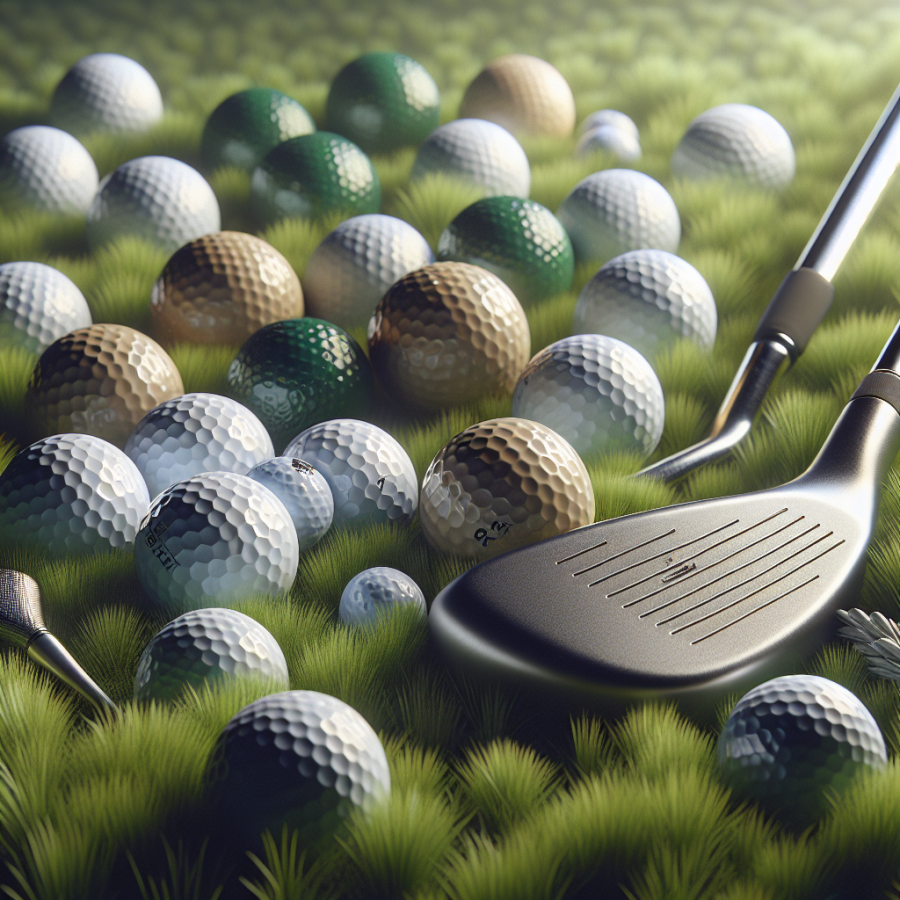Golf Ball Composition and Design: What to Look For When Making Your Selection
Understanding the golf ball's composition and design is a crucial step when selecting the perfect golf ball. Various factors such as materials used, the number of layers and the pattern of the dimples greatly impact the golf ball's performance.
The most fundamental aspect of a golf ball's design is its core, which dictates how far the ball can travel. The distance a golf ball travels largely depends on the hardness or compression of the core. Golf balls with a hard core typically have higher compression, which results in increased distance, but requires a powerful swing. For players with a slower swing speed, balls with a lower compression can be easier to hit and may travel further.
Another key aspect to consider is the number of layers a golf ball has. More precisely, golf balls can be categorized as one-piece, two-piece, three-piece, four-piece, and even five-piece. One-piece balls are generally the simplest and least expensive - perfect for beginners or for use on a driving range. Two-piece balls offer more distance and are durable but lack the feel and control provided by multi-layered balls. Three, four, and five-piece balls are preferred by more experienced players for their heightened control and spin characteristics.
The material of the cover also contributes significantly to the overall performance of the golf ball. Surlyn and Urethane are the most common materials used. Surlyn covered balls are known for their durability and distance, but lack the soft feel that some players prefer. Urethane covers, on the other hand, provide a softer feel and better control, making them a preferred choice for professionals and low handicappers.
Finally, the pattern of the dimples on a golf ball also has a substantial impact on a ball’s performance. Dimples help reduce drag and increase lift, allowing the ball to stay in the air for longer and thus travel further. Different brands will use different dimple patterns, but commonly, golf balls have between 300-500 dimples. When choosing a golf ball, you should consider how the dimple design might impact the distance, trajectory, and stability of your shots.
In conclusion, understanding the composition and design features of different golf balls can greatly influence your selection process. Remember, there is no one-size-fits-all when it comes to golf balls. Your playing style, swing speed, and personal preference should guide your decision in choosing the perfect golf ball.
Read also:
Breaking Down the Costs: How Much is a Golf R?
Understanding Your Golfing Style: Key Aspects to Evaluate
When it comes to improving your golf game, understanding your golfing style is crucial. Selecting the perfect golf ball is no different, and your unique playing style will play a significant role in this decision. Therefore, there are several aspects you need to evaluate about your golf playing style.
To start, assess your swing speed. Your speed of the club when hitting the golf ball is a critical factor in determining what kind of golf ball you should use. For example, players with a lower swing speed may perform better with a softer ball that allows for more distance, while players with a high swing speed might choose a firmer ball for better control.
Next, consider your shot tendency. Are your shots usually straight, or do they have a tendency to slice or hook? If your shots often veer to one side, a high-spin ball may help you correct this issue. Alternatively, a low spin ball can help straight hitters maintain their shot path.
Your skill level is another vital factor. Beginner players who are still learning might prefer a sturdy, two-piece ball that can withstand occasional mishits, while advanced players might opt for multi-layered balls that offer more spin control and feel.
Your playing conditions also count. The course condition and weather can significantly impact your golf ball's performance. In windy conditions, for example, a ball with lower lift can help keep your shots under control. On a wet course, a soft cover ball may provide more control and a better feel.
Understanding your comfort and preference is also important. Some golfers prefer golf balls that feel soft at impact, while others prefer a firmer feel. Certain brands might also feel more comfortable or perform better for your particular golfing style.
Lastly, your budget might also affect your golf ball type. While higher-end golf balls can enhance your performance, they are typically more expensive. If you frequently lose golf balls or are just starting out, cheaper balls might be a more cost-effective option.
By thoroughly evaluating these aspects of your golfing style, you can make a more informed decision when selecting the perfect golf ball. Remember, a golf ball that complements your skills and preferences can significantly improve your game.




